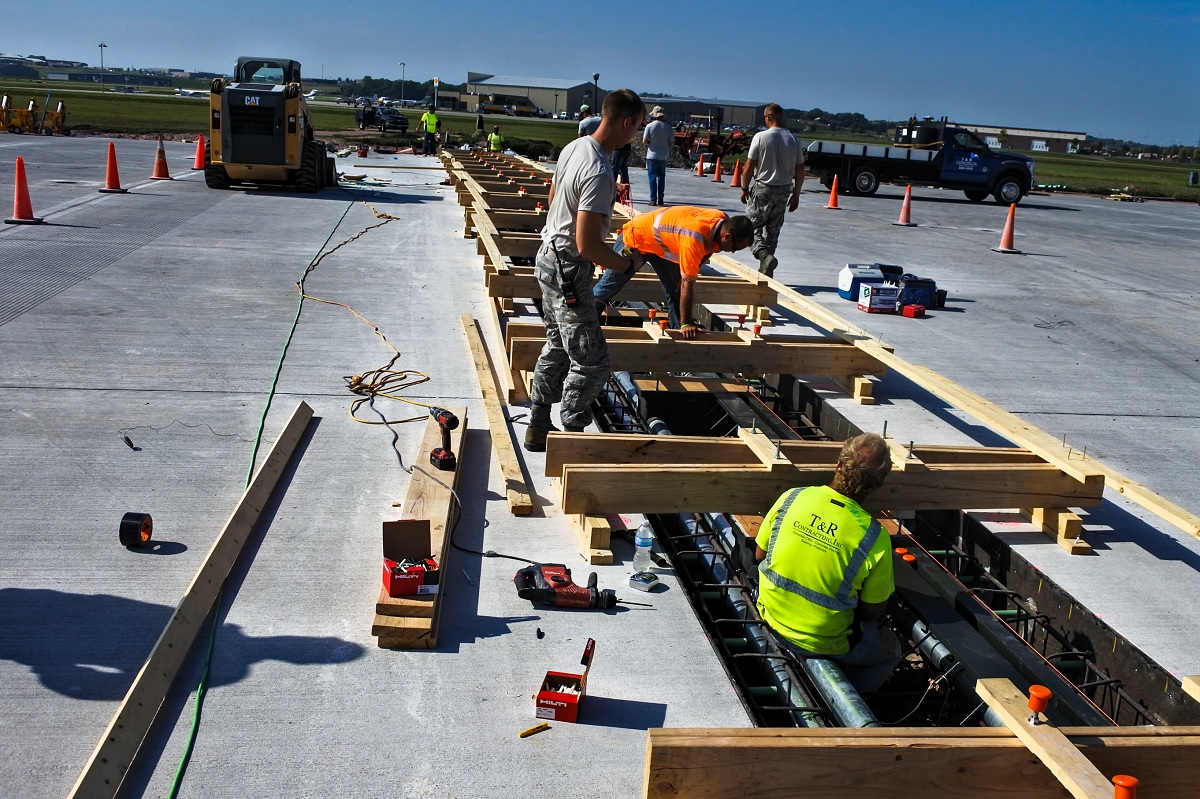The new BAK-14M contains less independent parts required to operate the equipment which means less maintenance and less possibility to negatively affect the flying mission
The U.S. Air Force (USAF) is phasing out the original BAK-14 hook cable support system and replacing it with the new BAK-14M.
“With our runway being joint use with the Sioux Falls airport we were able to get the new system installed during a recent runway construction project,” said Master Sgt. Chip Carda, 114th Civil Engineer Squadron power production supervisor.
As told by Story by Staff Sgt. Luke Olson, 114th Fighter Wing, Runway construction prompts arresting system upgrade, the Zodiac Arresting Systems BAK-14M Retractable Hook Cable Support System maintains the fully operational status of military hook cable aircraft arresting systems installed on active runways at military-commercial joint-use airfields, while providing unobstructed runway surface for commercial aircraft traffic.
The retract feature of the BAK-14M allows the hook cable to remain connected to the arresting system, yet it can be quickly lowered below the runway surface whenever non-military flight operations occur.

The new BAK-14M contains fewer independent parts required to operate the equipment which means less maintenance and less possibility to negatively affect the flying mission.
The system was certified as the USAF standard system after extensive aircraft testing. It also meets all FAA criteria for operational use and installation at joint-use civil-military airfields, such as Joe Foss Field.
“While other bases have retrofitted their arresting system, we are the first Air National Guard base to install the complete system,” said Carda.
As we have already explained an aircraft arresting system is designed to safely bring aircraft to a stop in the event of an emergency. It is used with the aircraft arresting hook to “catch” the jet.
When an in-motion aircraft develops an emergency, the aircrew has to decide if they need to use the arresting system. If needed, the pilot deploys the aircraft’s hook and lands the plane at least 1,000 feet from the arresting system.

The hook drags on the surface of the runway until it comes in contact with the steel cable. Once the aircraft’s hook captures the cable, the cable rips the nylon cords, holding it flat on the runway, and unravels its attached nylon tapes from storage reels.
As the tapes are unraveled, the reels turn a hydraulic pump that applies pressure to a set of modified brakes which bring the aircraft to a stop.
Instead, when a jet is not using the system to stop drives over the cable, that bounces. If the cable is not held down, it may damage the jet: for this reason, small pieces of nylon rope are used to hold the cable flat on the runway.
The following video shows a USAF F-16 Fighting Falcon fighter jet conducting an aircraft arresting system test to certify that the equipment is working properly.
Photo by Staff Sgt. Duane Duimstra and Tech. Sgt. Luke Olson / U.S. Air National Guard

